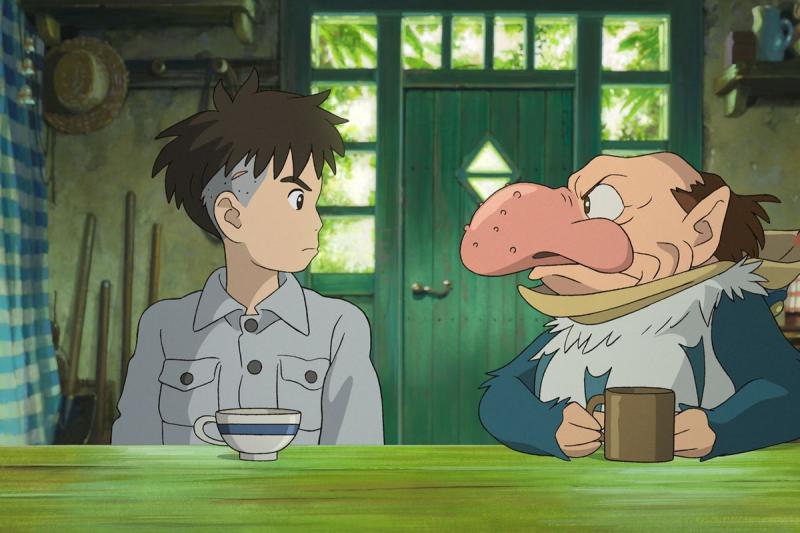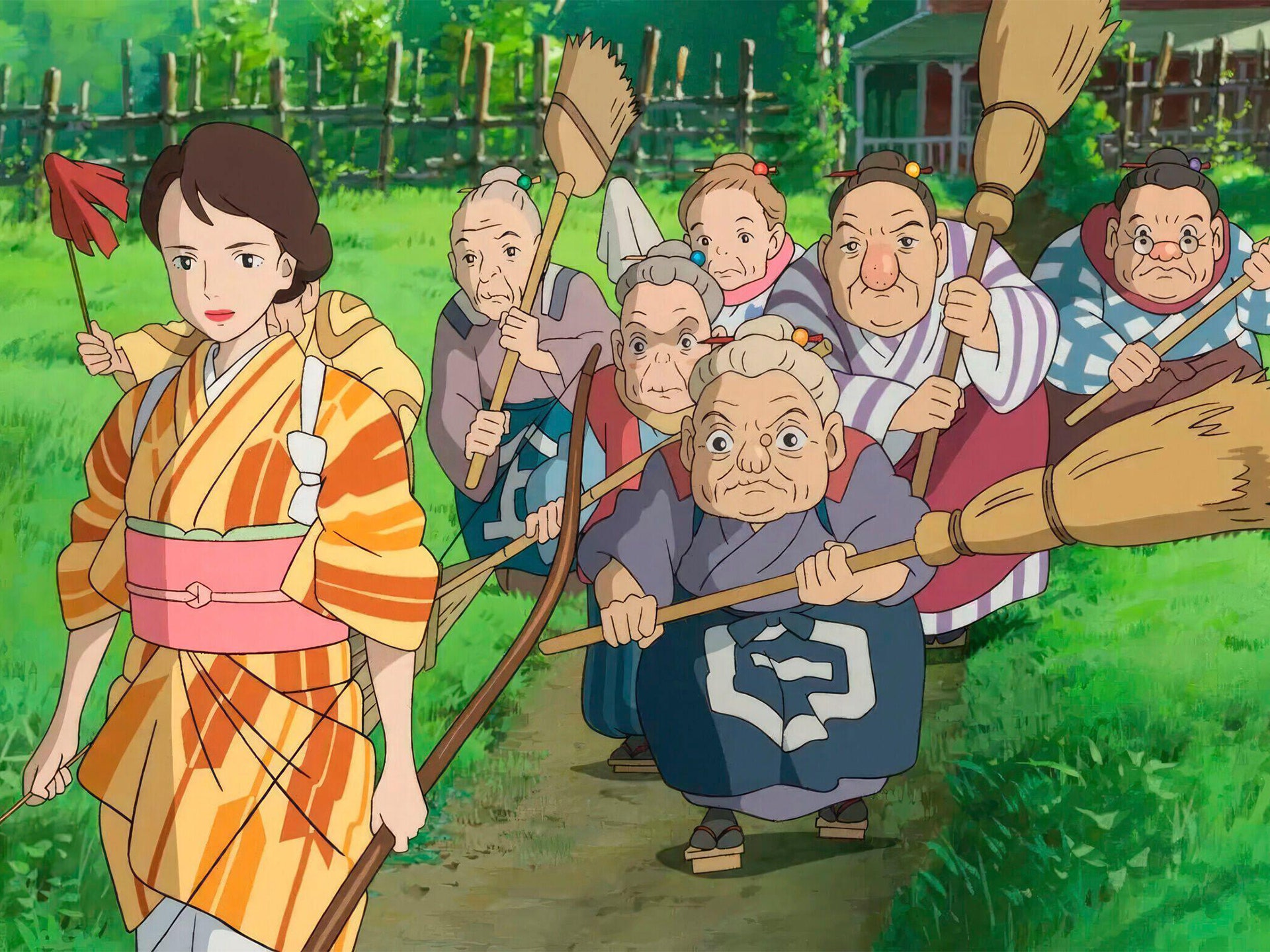The Boy and the Heron review - elegiac swan song by the Japanese anime master | reviews, news & interviews
The Boy and the Heron review - elegiac swan song by the Japanese anime master
The Boy and the Heron review - elegiac swan song by the Japanese anime master
Hayao Miyazaki creates a final visionary celebration of all that animation can achieve

Admirers of Hayao Miyazaki will find much to love in The Boy and the Heron, which he has said will be his final feature before retiring from film-making at the age of 82. It’s a beautifully crafted piece of work with all the tropes that admirers of Studio Ghibli have come to love over the years.
The film opens with an apocalyptic fire; it’s night, the air raid sirens howl and the skies are filled with flaming fragments. We hear the frantic breathing of a boy, running towards the burning Tokyo hospital where his mother works. It’s 1943, the Pacific War is raging and 12-year-old Mahito Maki is taken by his industrialist father to live in the countryside (much as the girls in Totoro were). His father has a grand estate and introduces his new pregnant wife, Natsuko (pictured below) to his son; Mahito isn’t prepared to accept her even though she’s his late mother’s sister and looks like her.
 Grieving Mahito struggles to fit in at his new school and engineers a head injury to stay home. He attracts the attention of a mysterious heron that lands on the windowsill of his bedroom, much to the bemusement of the gaggle of elderly maids who staff the house. When Natsuko mysteriously disappears, Mahito goes to find her and is soon immersed in a series of visually stunning adventures. A derelict tower built by an eccentric great uncle leads to an alternative world.
Grieving Mahito struggles to fit in at his new school and engineers a head injury to stay home. He attracts the attention of a mysterious heron that lands on the windowsill of his bedroom, much to the bemusement of the gaggle of elderly maids who staff the house. When Natsuko mysteriously disappears, Mahito goes to find her and is soon immersed in a series of visually stunning adventures. A derelict tower built by an eccentric great uncle leads to an alternative world.
There are many magical creatures – not just the heron who harbours a man inside his body and may or may not be the boy’s protector. Voracious pelicans, swirls of smiling white blobs and a flurry of malevolent multi-coloured parakeets all illuminate the screen and hark back to many of the spectacular fantasy sequences from Miyazaki classics like Princess Mononoke, Howl’s Moving Castle and most of all, Spirited Away.
The original Japanese title of The Boy and the Heron is How Do You Live, referencing a 1937 novel about a boy who also lost a parent and was bullied at school, but there seems to be a closer overlap with Miyazaki’s own childhood. The director lost his mother during the war and had a father who manufactured fighter plane components.
Miyazaki teases out themes around mourning and acceptance as Mahito struggles with the challenges thrown at him by the creatures that spring up around him and his own immaturity. Like other Studio Ghibli films, The Boy and the Heron doubtless requires repeated viewings and an understanding of Japanese folklore to fully appreciate Miyazaki’s intentions, but even on a first encounter, it’s a stunning piece of artistry.
The future of Arts Journalism
You can stop theartsdesk.com closing!
We urgently need financing to survive. Our fundraising drive has thus far raised £49,000 but we need to reach £100,000 or we will be forced to close. Please contribute here: https://gofund.me/c3f6033d
And if you can forward this information to anyone who might assist, we’d be grateful.

Subscribe to theartsdesk.com
Thank you for continuing to read our work on theartsdesk.com. For unlimited access to every article in its entirety, including our archive of more than 15,000 pieces, we're asking for £5 per month or £40 per year. We feel it's a very good deal, and hope you do too.
To take a subscription now simply click here.
And if you're looking for that extra gift for a friend or family member, why not treat them to a theartsdesk.com gift subscription?
more Film
 London Film Festival 2025 - crime, punishment, pop stars and shrinks
Daniel Craig investigates, Jodie Foster speaks French and Colin Farrell has a gambling habit
London Film Festival 2025 - crime, punishment, pop stars and shrinks
Daniel Craig investigates, Jodie Foster speaks French and Colin Farrell has a gambling habit
 I Swear review - taking stock of Tourette's
A sharp and moving tale of cuss-words and tics
I Swear review - taking stock of Tourette's
A sharp and moving tale of cuss-words and tics
 A House of Dynamite review - the final countdown
Kathryn Bigelow's cautionary tale sets the nuclear clock ticking again
A House of Dynamite review - the final countdown
Kathryn Bigelow's cautionary tale sets the nuclear clock ticking again
 theartsdesk Q&A: Idris Elba on playing a US President faced with a missile crisis in 'A House of Dynamite'
The star talks about Presidential decision-making when millions of lives are imperilled
theartsdesk Q&A: Idris Elba on playing a US President faced with a missile crisis in 'A House of Dynamite'
The star talks about Presidential decision-making when millions of lives are imperilled
 Urchin review - superb homeless drama
Frank Dillane gives a star-making turn in Harris Dickinson’s impressive directorial debut
Urchin review - superb homeless drama
Frank Dillane gives a star-making turn in Harris Dickinson’s impressive directorial debut
 Mr Blake at Your Service review - John Malkovich in unlikely role as an English butler
Weird comedy directed by novelist Gilles Legardinier
Mr Blake at Your Service review - John Malkovich in unlikely role as an English butler
Weird comedy directed by novelist Gilles Legardinier
 Don't Let's Go to the Dogs Tonight review - vivid adaptation of a memoir about a Rhodesian childhood
Embeth Davidtz delivers an impressive directing debut and an exceptional child star
Don't Let's Go to the Dogs Tonight review - vivid adaptation of a memoir about a Rhodesian childhood
Embeth Davidtz delivers an impressive directing debut and an exceptional child star
 One Battle After Another review - Paul Thomas Anderson satirises America's culture wars
Leonardo DiCaprio, Teyana Taylor, and Sean Penn star in a rollercoasting political thriller
One Battle After Another review - Paul Thomas Anderson satirises America's culture wars
Leonardo DiCaprio, Teyana Taylor, and Sean Penn star in a rollercoasting political thriller
 Steve review - educator in crisis
Cillian Murphy excels as a troubled headmaster working with delinquent boys
Steve review - educator in crisis
Cillian Murphy excels as a troubled headmaster working with delinquent boys
 Can I get a Witness? review - time to die before you get old
Ann Marie Fleming directs Sandra Oh in dystopian fantasy that fails to ignite
Can I get a Witness? review - time to die before you get old
Ann Marie Fleming directs Sandra Oh in dystopian fantasy that fails to ignite
 Happyend review - the kids are never alright
In this futuristic blackboard jungle everything is a bit too manicured
Happyend review - the kids are never alright
In this futuristic blackboard jungle everything is a bit too manicured

Add comment